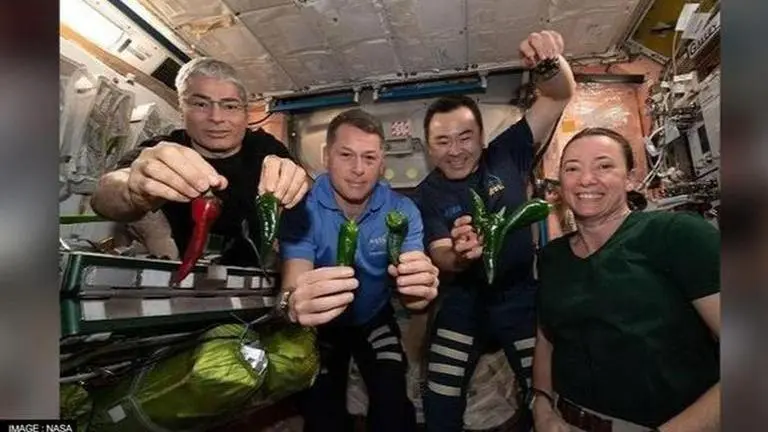Updated 4 November 2021 at 21:15 IST
SpaceX Crew-2 arrival: A quick look at some experiments conducted by astronauts aboard ISS
NASA's SpaceX Crew-2 team has conducted a number of experiments during their stay at the orbiting station ranging from physics to biology.
- Science News
- 3 min read

The astronauts from NASA’s SpaceX Crew-3 mission will soon return to Earth after spending over six months aboard the International Space Station (ISS). Consisting of four members; NASA astronauts Shane Kimbrough and Megan McArthur, JAXA (Japan Aerospace Exploration Agency) astronaut Akihiko Hoshide, and ESA (European Space Agency) astronaut Thomas Pesquet, the team has conducted a number of experiments during their stay at the orbiting station. These experiments ranged from the fields of physics to biology where the astronauts achieved major breakthroughs. Let's take a look at the out-of-this-world scientific journey of the Crew-2 members.
Space experiments filled the Exp 66 crew’s day as four station astronauts continued packing for a return to Earth. https://t.co/9TiVf892aT
— International Space Station (@Space_Station) November 2, 2021
Chili production for space taco
This achievement of the astronauts is the most recent one as they successfully cultivated the first chili pepper aboard the ISS. The cultivation was part of NASA's Plant Habitat-04 (PH-04) experiment and was one of the most complex to date on the station because of the long germination and growing duration. However, the astronauts are savouring the fruits of their success as they recently shared pictures of the crew enjoying 'space tacos' with the new ingredient.
Cultivating cotton beyond Earth
The astronauts have reached as far as producing cotton in space under NASA's Targeting Improved Cotton Through On-orbit Cultivation (TICTOC) space botany study. According to the agency, this study is to determine how root system structure affects plant resilience, water-use efficiency, and carbon sequestration during the critical phase of seedling establishment.
Bringing augmented reality in use for repairs
Augmented reality technology has emerged as a new tool for the ISS astronauts which is being utilised during science experiments and orbital maintenance tasks. The astronauts don the augmented reality (AR) goggles to carry out tasks without assistance from ground teams. Earlier, T2 Augmented Reality (T2AR) project conducted during Expedition 65 demonstrated how station crew members can use AR to inspect and maintain scientific and exercise equipment necessary for research and crew health respectively.
Advertisement
The Molecular Muscle Experiment 2
Under this experiment, the astronauts are studying human health changes in space using tiny C. elegans worms. Here, the experts test a series of drugs to see if they can improve health in space, something which might lead to new therapeutic targets for examination on Earth.
The Cardinal Muscle investigation
In the quest to find a way to solve muscle mass in space, NASA started the Cardinal Muscle investigation. It is evident that as people on Earth age, they lose muscle mass owing to a condition called 'sarcopenia'. Astronauts also experience a loss of muscle mass during spaceflight, but it happens much faster than on Earth. With this experiment, the astronauts test whether engineered tissues cultured in space could take advantage of this accelerated loss and support the development of a model for quickly assessing possible drugs prior to human clinical trials.
Advertisement
Image: NASA
Published By : Harsh Vardhan
Published On: 4 November 2021 at 21:18 IST





